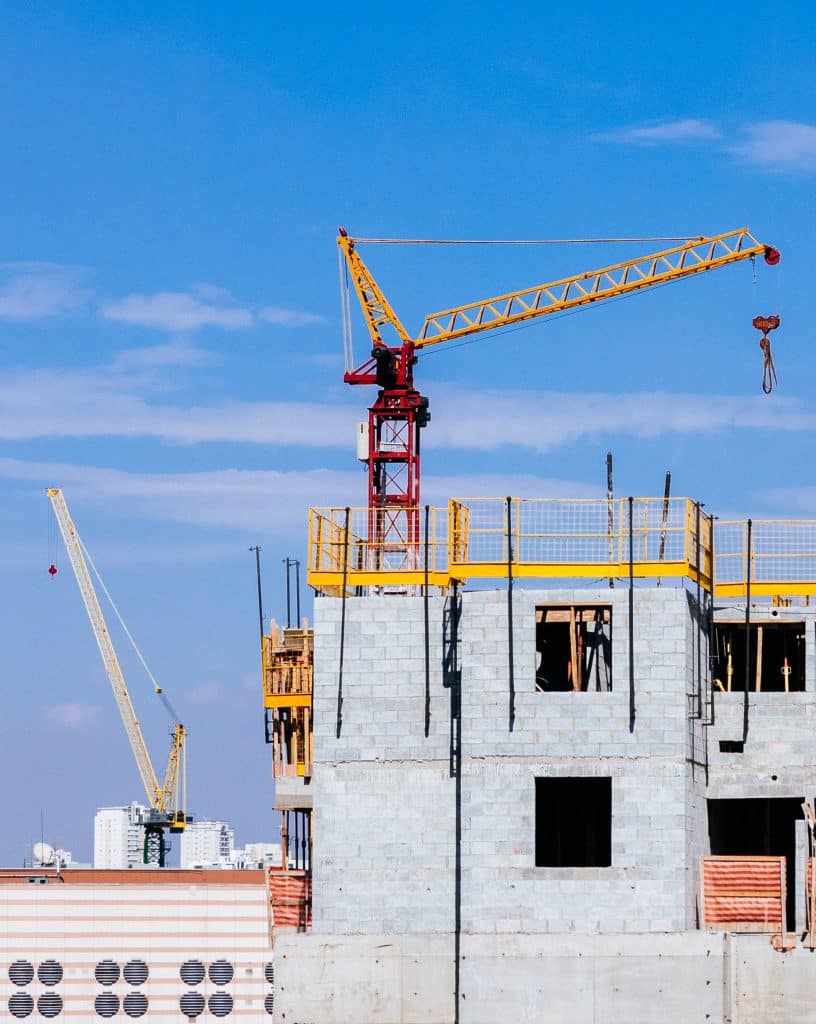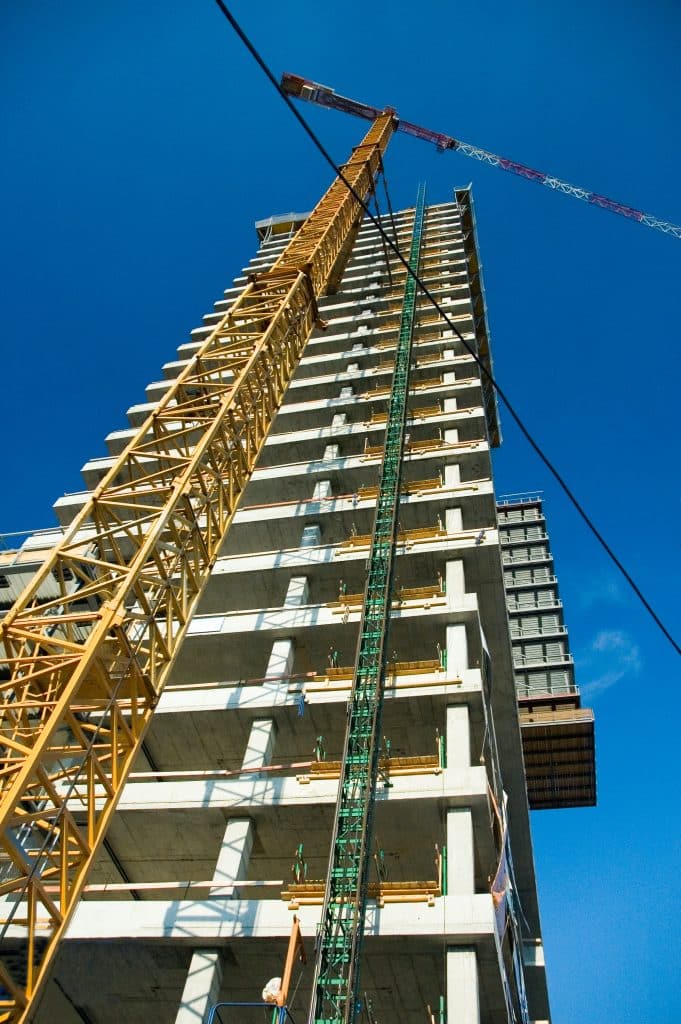
Drones are popular in the construction industry, and for good reason. They are used for a variety of tasks, including façade inspections, concrete pour monitoring, and structural monitoring at height. This is especially valuable in urban high-rise building construction projects, where traditional methods of building inspection can be dangerous and time-consuming.

Common Types of Traditional High Rise Inspections
Visual inspections, where inspectors climb the building or use scaffolding to get a close-up look at the façade, roof, and other exterior surfaces are the most basic and most dangerous. Magnified inspections use magnification such as binoculars to get a closer look at small details in hard to reach places. While not necessarily dangerous, finer surface cracks and other facade imperfections are easily missed. Non-destructive testing (NDT) uses a variety of techniques to inspect the building including ultrasonic testing, which uses sound waves to detect cracks and other defects, and infrared thermography, which uses heat imaging to detect areas of heat loss or gain. Remote visual inspection (RVI) uses cameras and other sensors to inspect the building from a distance. RVI is used to inspect areas that are difficult or dangerous to reach, such as the roof or the exterior walls.
Unique Challenges of Urban High-Rise Construction
Urban high-rise building construction projects present a number of unique challenges, including:
Building Height: High-rise buildings can be hundreds of feet tall, making it difficult and dangerous to inspect them manually.
Building Access: Access to high-rise buildings is generally restricted, making it difficult to get inspectors to the areas that need to be inspected.
Weather Conditions: Urban areas can experience extreme weather conditions, such as high winds and rain, which can make manual inspections difficult and dangerous. Professional drone pilots are skilled at navigating complex weather situations. More importantly, FAA certified drone pilots know when bad weather precipitates postponing or abandoning a mission altogether.

How Drones Can Help
Drones can overcome these challenges and provide a number of benefits for urban high-rise construction projects, including:
Drone Safety: Drones inspect high-rise buildings without putting inspectors at risk.
Data Collection Efficiency: Drones inspect high-rise buildings quickly and easily, saving time and money.
Data Accuracy: Drones provide high-resolution images and videos of high-rise buildings used to identify potential problems.
Project Documentation: Drones are used to create 3D models of high-rise buildings, which are used for planning and documentation purposes. The data is also used to keep key stakeholders engaged and involved in construction progress.
Regulatory Considerations
Before using drones for construction projects, it is important to be aware of the regulatory considerations and airspace restrictions. Drones are regulated by the Federal Aviation Administration (FAA). The FAA regulates drone pilots for commercial applications through a set of rules known as Part 107. Under Part 107, commercial drone pilots must obtain a Remote Pilot Certificate by passing an aeronautical knowledge test. This certificate allows pilots to operate drones for commercial purposes. The regulations outline requirements such as airspace restrictions, operational limitations, daylight-only operations, visual line of sight requirements, and the need to obtain proper authorization for certain activities, such as flying in controlled airspace. Compliance with these regulations ensures safe and responsible drone operations for commercial applications.
Recent Case Studies
There are a number of recent case studies that demonstrate the benefits of using drones in high-rise construction projects. For example, in 2018, a drone was used to inspect the façade of the Willis Tower in Chicago. The drone was able to identify a number of potential problems, including loose bricks and missing mortar. These problems were repaired before they caused any damage to the building.
In another case study, a drone was used to monitor a concrete pour at a high-rise building in New York City. The drone was able to provide real-time footage of the pour, which allowed the construction team to identify any problems early on. This helps to ensure that the concrete pour is completed successfully.
Conclusion
Drones are a valuable tool for urban high-rise construction projects. They help to improve safety, efficiency, and accuracy. If you are considering using drones for your next high-rise construction project, it is important to work with a professional Drone Service Provider (DSP). A DSP will help you to comply with all of the regulatory requirements and ensure that your drone flights are safe and successful.
Hiring a DSP
Hiring a DSP to handle the highly technical aspects of drone data collection for urban high rise construction is a more efficient, safe and cost effective alternative to manual inspections that include deploying dangerous scaffolding, suspension supports and spider lifts.
A DSP has the expertise and experience to fly drones safely and efficiently in urban environments. There are unique considerations for each project including understanding controlled airspace, the impact of weather and wind at altitude, city permitting and traffic and crowd control at the buildings base to name a few. They also have the necessary equipment and software to collect and process drone data. This will save time and money, and helps to ensure that your high-rise construction project is completed on time and within budget.
From The Editor:
Do you need to hire a professional drone service provider for your project? To speak to an aerial data specialist, fill out a form, email us or for even faster response times, give us a call at (833) FLY-4YOU or (833) 359-4968. Check out our transparent pricing at https://aerialdecisions.com/drone-photography-pricing/ and watch this space as we expand on the above topics and more over the coming weeks and months.
If you like this post, feel free to click the share button at the bottom of the page. We appreciate you helping us by spreading the content we share on our blog.
- Drones and Construction – The 2025 Outlook - February 8, 2025
- The Future of Business: Top 7 Commercial Drone Applications Across Key Sectors - January 19, 2025
- From Over-Ordering to Supplier Accountability: How Drones Redefine Stockpile Management - January 12, 2025

